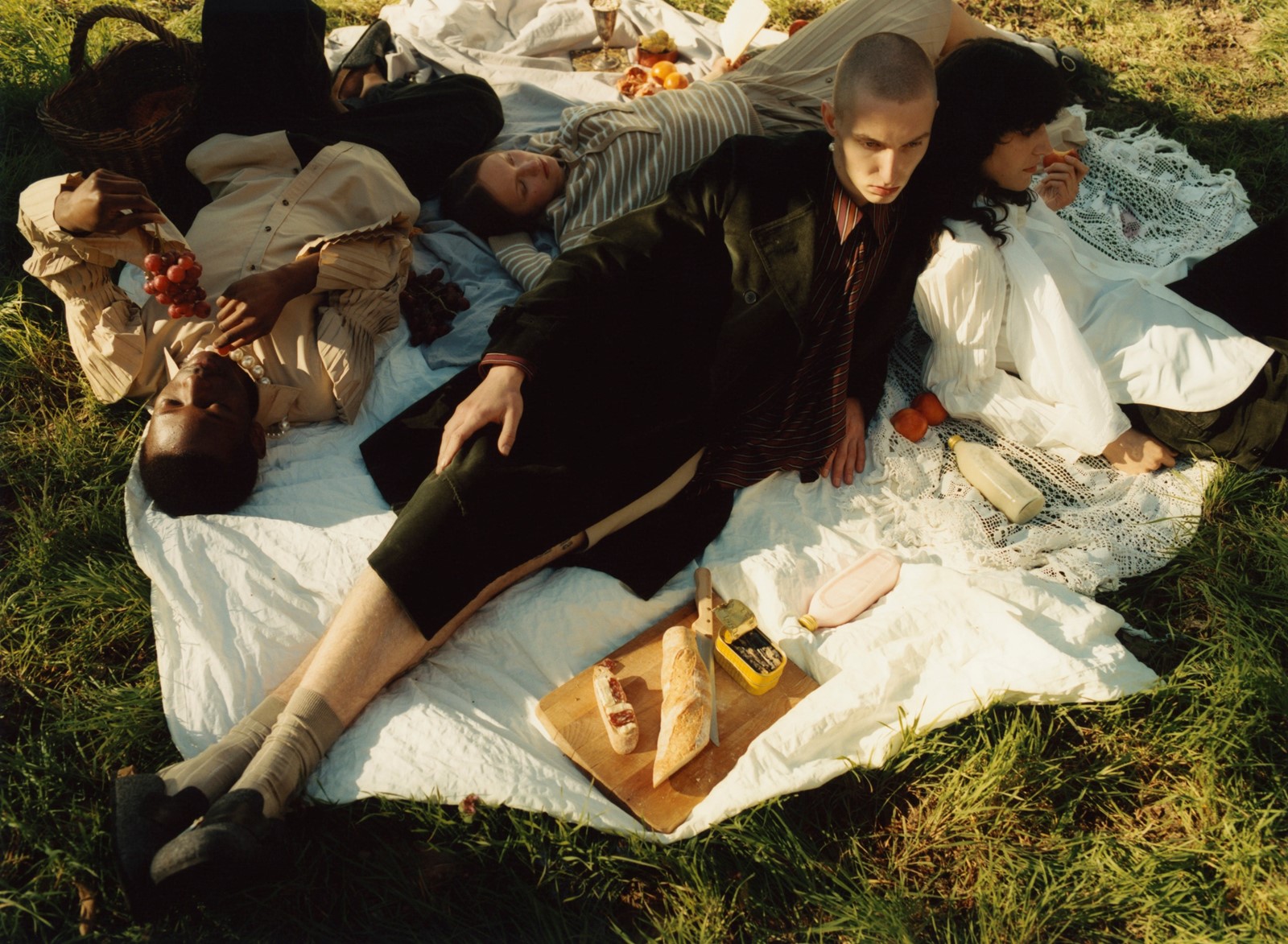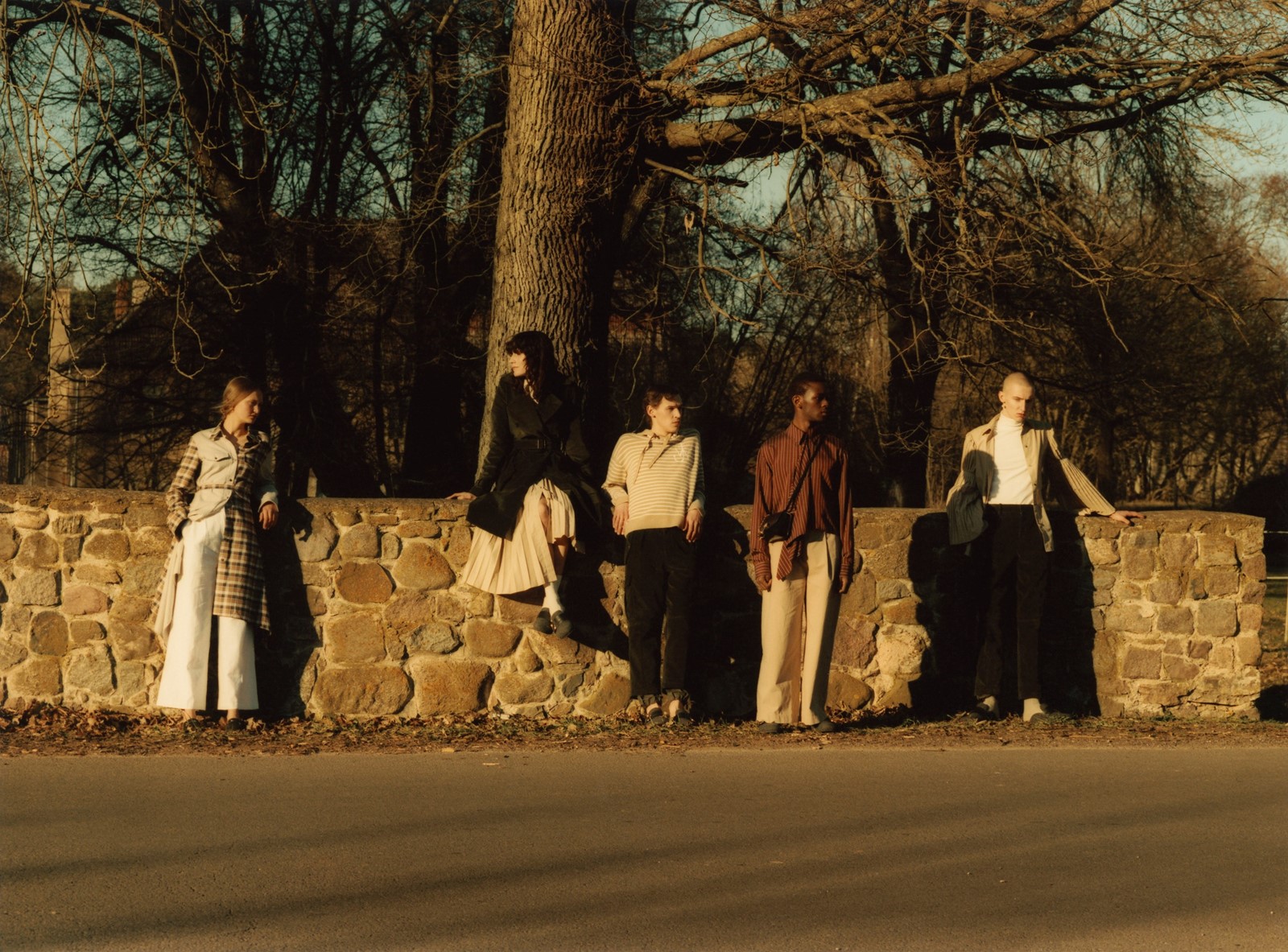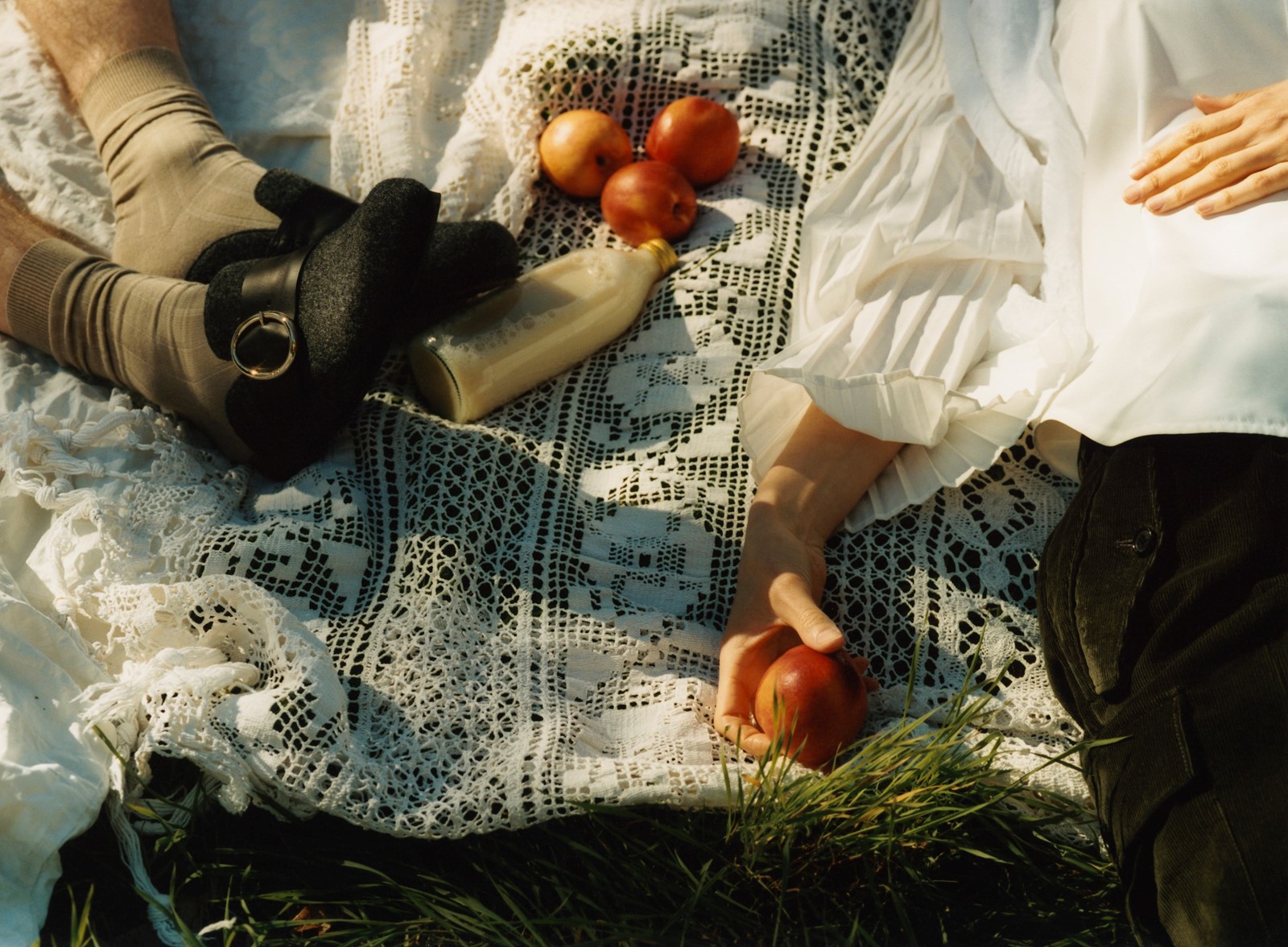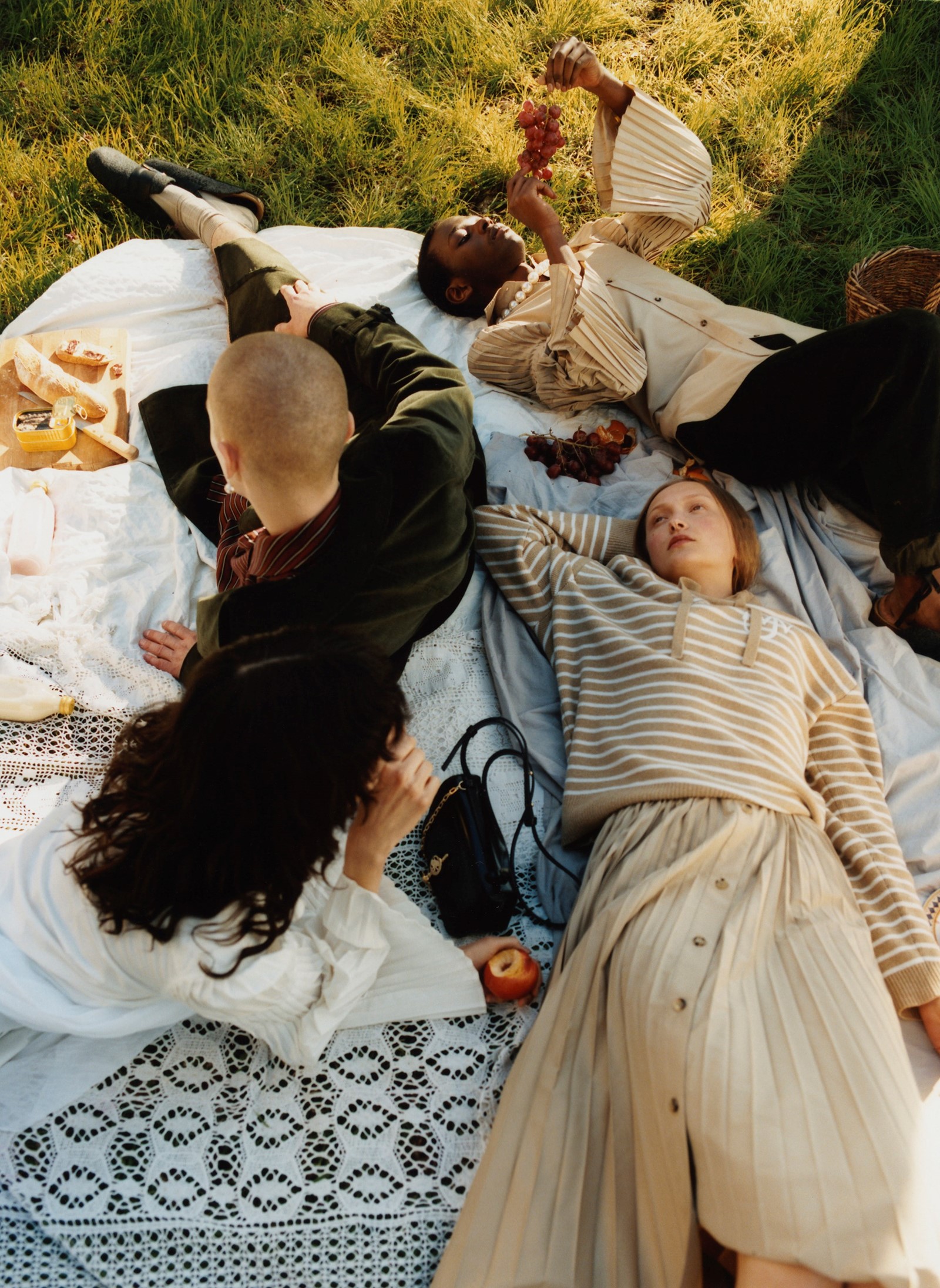This article is published as part of a new series of Designer Interviews, where we’re speaking to some of the industry’s most crucial voices about this current – and highly unique – moment in fashion history.
With six catwalk shows and multiple collections each year across both his eponymous label and the Spanish brand Loewe, Northern Ireland-born London-based designer Jonathan Anderson is one of fashion’s most prolific talents.
During the Covid-19 pandemic and lockdown he, counterintuitively, became even more prolific, producing collaborative collections for both labels as well as working towards his Spring/Summer 2021 menswear collections and women’s pre-collection offerings.
As JW Anderson releases an archive-inspired, gender-free capsule collaboration with online retailer YOOX, the designer looks back at his own heritage, and forward at the future of fashion and the world at large.
Alexander Fury: How is everything?
Jonathan Anderson: Everything is, you know ... happening.
AF: Are you moving around at all or are you still?
JA: I am moving around. It’s a very complex thing to do at the moment, but I ...

AF: Are you going to Paris?
JA: I am on the exemption list, because I have a job that I go to every week there. So that’s been good, very eerie, on a train with 40 people. It’s really weird. So I do, I’m doing that. And then back to JW Anderson. We have nine people in the building. We’re trying to get the collections shot. So I don’t know. I’m getting there.
I think right now, this time, it’s like you’ve broken something and then you are trying to glue it back together. Trying to make it a better version of what it was before. You can’t. So it’s a very interesting period, I must admit.
AF: How did this collaboration come about and what was the idea behind it?
JA: We were approached – YOOX are turning 20, we have turned ten. YOOX have been incredibly supportive of the brand. It’s been a long relationship. I was talking with the team and I was looking back on what JW Anderson was, or is, or what its values are. And I kind of was like looking back at one of the very first press statements I had done, myself. I made this manifesto and it was about this idea of a shared wardrobe. That clothing was whatever you wanted it to be. Then I kind of became obsessed about this idea. I’ve always loved Jean Paul Gaultier, and he tackled it in one way. And I wanted to try to tackle it in a kind of like, the white shirt, what it meant to Patti Smith and what it meant to Robert Mapplethorpe. Less gloss, more blunt.
So I kind of liked this idea that I wanted to produce a wardrobe which was for anyone.

AF: There’s no reason a man or a woman can’t wear any piece.
JA: And I wanted the colours to feel kind of slightly nostalgic and slightly subdued in a way. So it was more that it could work on all body types. You can’t really put a finger on the decade. So that’s really what it’s about.
AF: There is kind of a retrospective and an archival aspect to it. I think it’s also interesting this genderless thing coming through – almost this tension between a softness and a hardness which, maybe, represents masculinity, femininity, the blending all of those together.
JA: Exactly. Sometimes as a designer, you get remembered for one little thing that you did. I think in the end, it kind of defines you. It happens with painters. Sometimes you go through a rejection process of that. And we don’t want to be defined by that. We want to be able to do something else. I think over ten years, I’ve realised that, I think when I did the ruffled boot collection, made out of felt [Autumn/Winter 2013 menswear], even through doing the show at the Hepworth Wakefield. I came to terms with that. That initial thought was important.
AF: Enough distance for you to look at it now objectively.
JA: It was subconscious. I wasn’t out to prove that it was about gender. It was the people who were buying the clothing that became the inspiration for me in a way. Through that early period, people from all different parts of gender were saying “you helped me out to understand myself when you first started, because I was young and I was into fashion, but I wasn’t comfortable in my own body. I wasn’t comfortable with my own sexuality.” It’s really interesting. Sometimes you have to kind of succumb to who you are. And it’s very difficult sometimes I think if you’re working as a designer, because ultimately you want to reinvent.

AF: Do you feel that people kind of relate to those ideas differently than when you first started working in fashion? The idea of perceptions of gender and blurring those boundaries?
JA: Well, I did it because it was subconsciously what I was seeing on people I knew around me. Sometimes I think political messages have to be solutions rather than statements. What I always dislike is when you take something which should not be a trend but should be a reality, and call it a trend.
There are some people like in history that I feel are very important for me in terms of what I’ve discovered along the way. When I look at, for example, Gluck, the painter. They felt compelled to dress that way, because it’s what made them feel who they were. If they were living today ... what they were trying to explore in their own gender would have been probably categorised quite differently now. We have more of an openness in terms of society. We have an understanding in terms of all different types of gender. And we have an acceptance and we should have acceptance. There’s a lot more that needs to be done.
AF: I love that idea, that the messages have to be solutions rather than statements. That’s absolutely what it needs to be. I think that’s political, but it’s also what fashion is going through at the moment. You’ve got to try and offer solutions and help.
JA: My whole thing is that, as a society, if we cannot help one another, how the hell are we going to get out? I look online and I think, we have to. What’s happening with Black Lives Matter, what’s been happening with inequality in the workplace, what’s been happening with inequality with women, what’s been happening with sexual harassment. All these things have been boiling. We have to help each other. We have to.
Every industry has problems. There are environmental issues. There are all these different things, but we have to be realistic. If we’re going to rebuild a system, be honest and come up with creative, pragmatic solutions. We will be able to have the difficult conversations. I think if you even look globally at what’s happened, the governments that have been incredibly honest are the governments that have come up with solutions. I’m not going to get into any politics and I’m not going to say who and what and where, because it’s not my place. But when I look at when people are saying, “I have done this and have been wrong, but I’m going to create another solution. We’re going to try change.” You take people with you on the journey.
